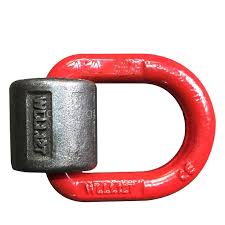Rigging hardware standards are established by various organizations and regulatory bodies to ensure that rigging hardware such as shackles, hooks, and slings meet certain requirements for quality, safety, and performance. Here are some common rigging hardware standards:
ASME B30.26: This standard covers the design, marking, and testing of shackles used in industrial lifting and rigging applications.
ASME B30.10: This standard covers the marking, construction, and performance of hooks used in industrial lifting and rigging applications.
ASTM International: ASTM International sets standards for materials, products, and systems used in various industries, including rigging hardware.
NACM: The National Association of Chain Manufacturers sets standards for shackles, hooks, and other rigging hardware used in the lifting and rigging industries.
EN: The European Committee for Standardization sets standards for shackles, hooks, and other rigging hardware used in various industries in Europe.
AS/NZS 4344: This Australian/New Zealand standard specifies the design, construction, and marking of shackles, hooks, and other lifting and rigging hardware.
ISO 2415: This international standard specifies the design, testing, and marking of shackles used in lifting and rigging applications.
These standards help ensure that rigging hardware is manufactured to specific requirements, including strength, durability, and safety. It is important to choose rigging hardware that meets the appropriate standards for the specific application to ensure safe and effective use.







